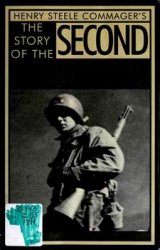Fertility and pleasure models sought to guide female behavior in the marriage household and bordello. For each model, ritual was especially important in the celebratory incorporation of women into a new role and institution. In the fertility model the marriage ceremony ushered a woman into the wifely world; ceremonies marking a woman’s debut as a courtesan and her first meeting with a client placed her in the role of courtesan. Although these rituals of celebration put the values of fertility and pleasure into sharp contrast, they also revealed a similitude of symbols, concepts, and human situations. Wedding ceremonialism was at the root of this similarity. A wedding in the fertility model sought to accomplish a number of things: reorient a woman’s social identity, establish proper relations with her husband and his household, and charge her sexuality with a purposeful fertility. Marriage rites displayed in idealized form fertility’s values of touting female obedience and loyalty to her new household and hoping for childbirth. Within the pleasure model a similar process was at work when a young woman debuted and when she ritually entered into an exclusive sexual partnership with a new client. Liberally borrowing elements from marriage rites, these ceremonies also created special relations between women and men while bringing to idealized form pleasure’s values of feminine high spirits and sexual play. Still, within the pomp of these ceremonies lay potential problems that curbed each model’s idealization. The celebratory rites themselves revealed this reality check. Wedding ceremonies allowed a bride’s family to maintain symbolic ties to its daughter despite fertility’s insistence that her identity be limited to that of simply wife, always obedient and hopefully fertile. In the quarters, rites of intimate relations proved no less problematic.
The incorporation of symbols and ritual forms taken directly from wedding ceremonies suggest a level of equivocation with pleasure’s own values that a woman’s identity be limited to that of an alluring and spirited sexual person with many lovers.
The parallels of pomp and problems faced by these two sets of entrances are the subject of this chapter. I first look at the religious motives and metaphors underlying idealizations of reorienting a woman’s social identity and role. Still, these motives and metaphors indicate each model’s symbolic acknowledgment that full incorporation of its women could be tenuous. Second, this hope for reorientation, accompanied by a sense of ambivalence toward fully achieving it, is best highlighted through finding historical windows through which to view the symbolic structure of the rituals. I describe these rites of entrance by first detailing the elite wedding ceremony portrayed in Namura’s guide, A Record of Treasures for Women. Then I move on to the rites of debut and first meeting as a variety of period sources depict them. Before proceeding, though, I give a brief overview of the historical context of the normative marriage pattern and its alternatives.




 World History
World History









